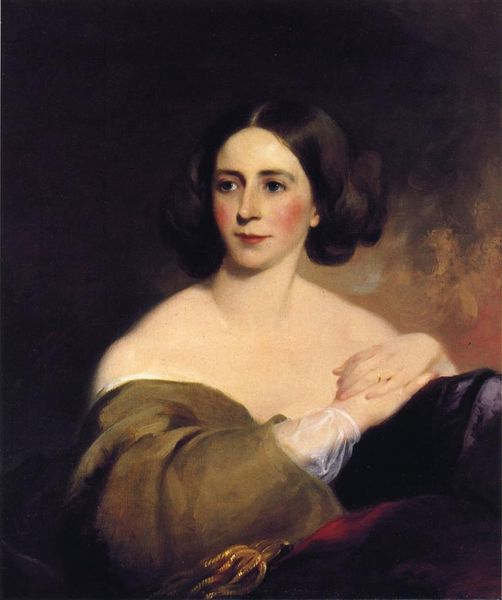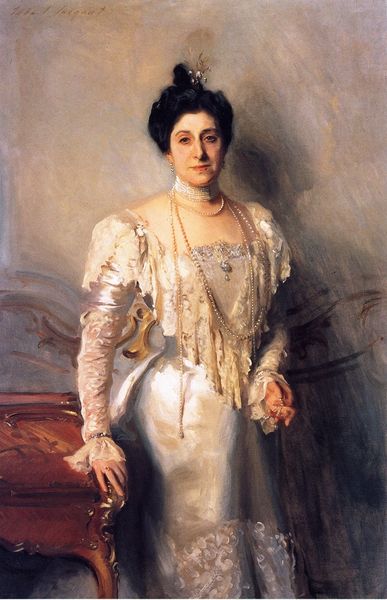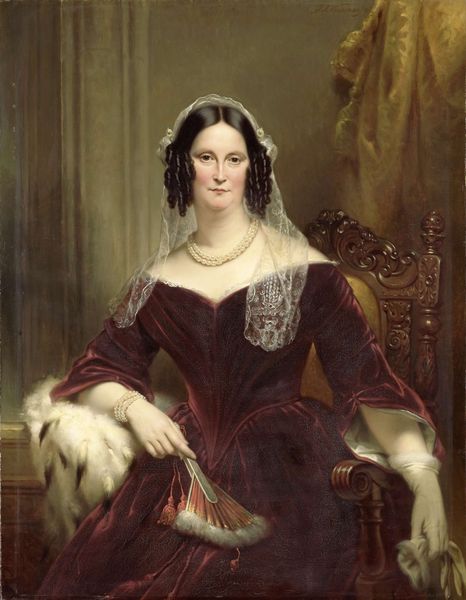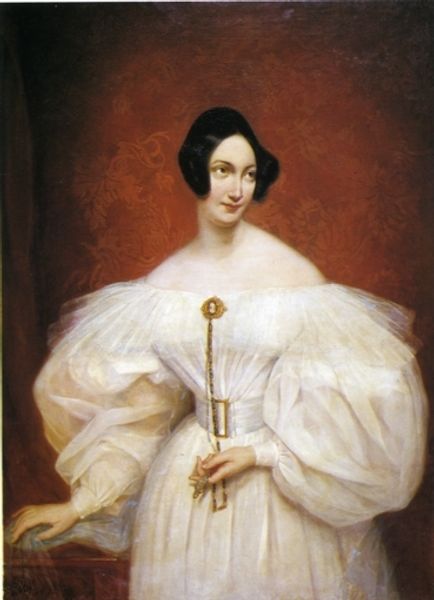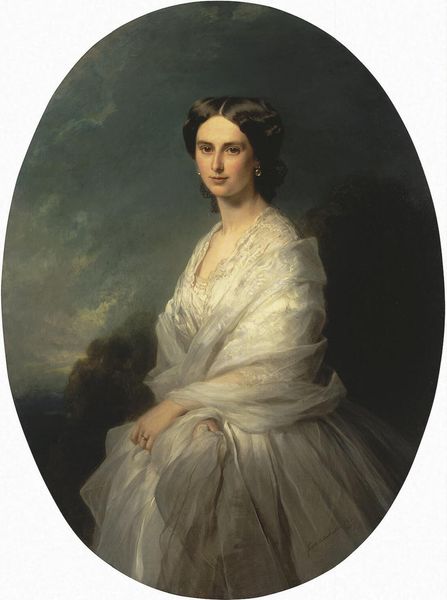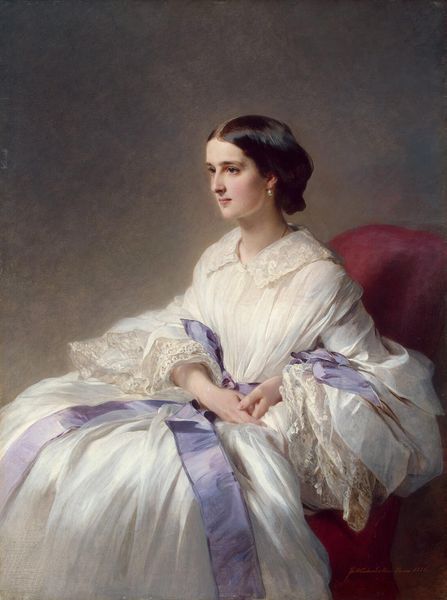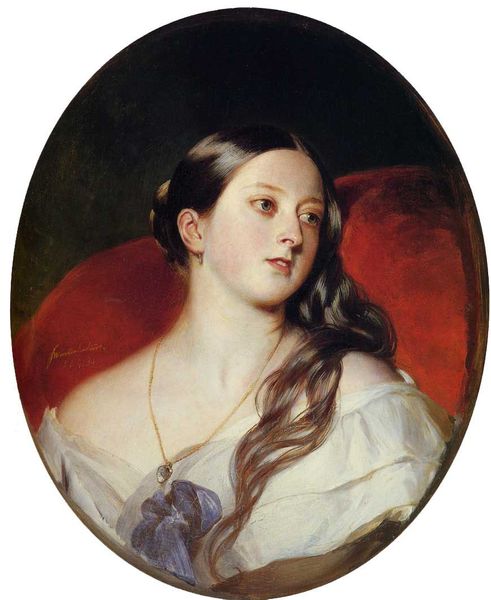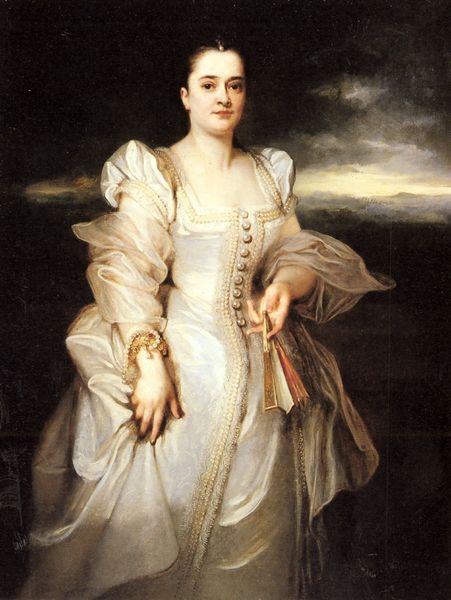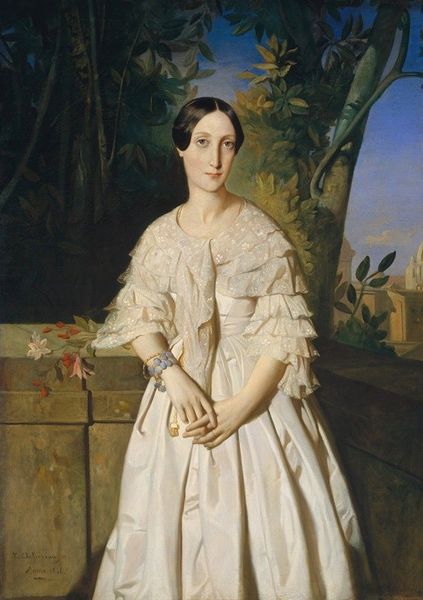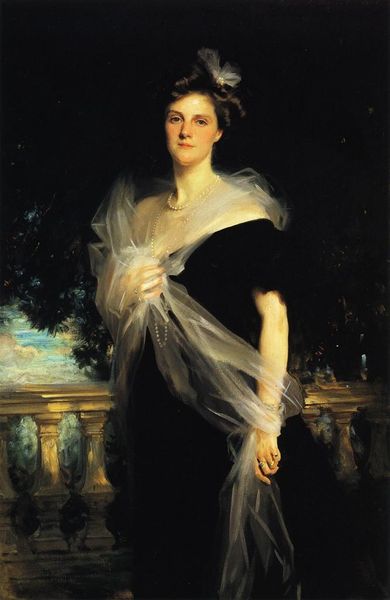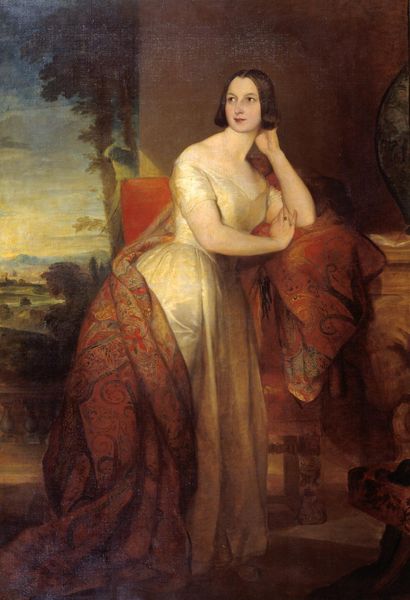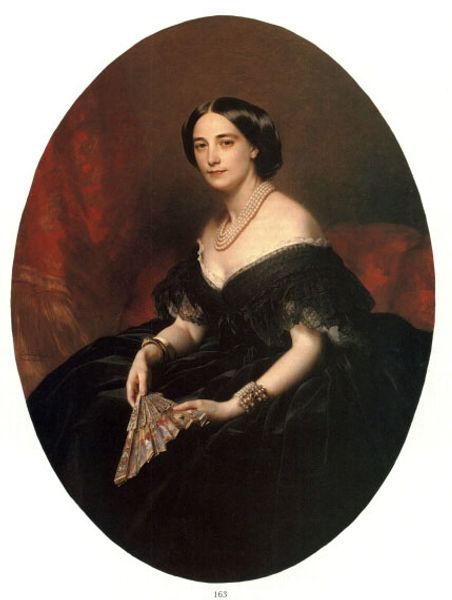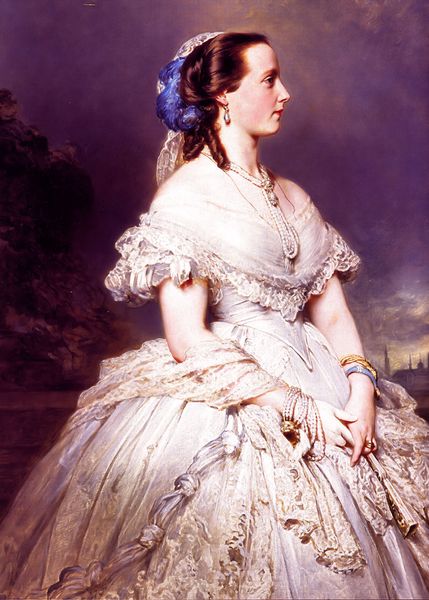
Portrait of Madame Ackerman, the wife of the Chief Finance Minister of King Louis Philippe 1838
0:00
0:00
franzxaverwinterhalter
Private Collection
oil-paint
#
portrait
#
oil-paint
#
romanticism
#
genre-painting
Dimensions: 130.5 x 97.8 cm
Copyright: Public domain
Curator: Good morning. Today we’re looking at Franz Xaver Winterhalter's “Portrait of Madame Ackerman, the wife of the Chief Finance Minister of King Louis Philippe,” painted in 1838 using oil on canvas. Editor: She looks almost unnervingly composed, doesn't she? Poised on that ledge, with that perfectly draped shawl and that almost… empty gaze. I'm finding her stillness quite striking. Curator: The stillness contributes to a larger statement about women's status in the era. This pose mimics those of neoclassical sculptures—an echo of idealised beauty. Winterhalter often paints these powerful female portraits, encoding the societal expectation for women of the time: a silent, supportive, and elegant role within powerful men’s lives. The landscape in the background frames her. Editor: It's interesting you bring that up because I can't help but consider Ackerman as a representation of her husband's political power and ambition, or what his ambition enabled for her. Her presence here—carefully orchestrated—speaks volumes about class, status, and access. That luxurious shawl isn't just an accessory, it's a declaration. Curator: The shawl's ornamentation pulls one's gaze – a kind of emblem. Beyond being beautiful and an ostentatious symbol, shawls were often culturally specific. The patterns and dyes would have carried specific local meanings in the area in which they were made. They served to create narratives around women in paint and sometimes signified the status and wealth of the women and their families. Editor: So, the shawl can be considered as a site of cultural intersection. Considering its origin—often Eastern—the shawl might evoke discussions around colonialism and its impact on material culture, particularly in fashion. What appears to be a simple fashion accessory unfolds into a broader political context. It's about beauty, yes, but also about power dynamics embedded within systems of trade and cultural exchange. Curator: Indeed, it reflects both aesthetic preference and historical narratives around consumption. This era was marked by expanding global trade routes. How the materials of that trade came to define Western conceptions of beauty is relevant to understanding our moment now. Editor: Thank you. Looking closely, you start to see a reflection of a world far beyond Madame Ackerman. Curator: I agree, every part is placed intentionally, forming a complex symbol.
Comments
No comments
Be the first to comment and join the conversation on the ultimate creative platform.
